
The Enchanting Teutoburg Forest: Germany's Historical Wilderness
Explore Teutoburg Forest, where Germany's rich history meets natural beauty. Discover ancient battlefields, scenic trails, and charming towns in this enchanting wilderness.
The Teutoburg Forest, or Teutoburger Wald, is a place where history and nature intertwine. This vast forest in northwestern Germany offers a captivating mix of lush woodlands, rolling hills, and ancient ruins. Here, you can walk the same paths once trodden by Roman legions, as the forest is famously known for the Battle of the Teutoburg Forest in 9 AD, where Germanic tribes ambushed and defeated three Roman legions. Today, the forest stands as a testament to this pivotal moment in history, with numerous monuments and museums dedicated to its legacy. Beyond its historical significance, the Teutoburg Forest is a haven for nature lovers. The forest is home to a rich variety of flora and fauna, making it a paradise for hikers, bird watchers, and outdoor enthusiasts. The well-marked trails cater to all levels, from easy walks to challenging hikes. Along the way, you'll encounter serene lakes, babbling brooks, and panoramic viewpoints that offer breathtaking vistas of the surrounding countryside. For those seeking cultural experiences, the nearby towns and villages are brimming with charm. Bad Lippspringe, Paderborn, and Detmold offer a glimpse into traditional German life with their half-timbered houses, bustling markets, and welcoming locals. Don't miss the Hermannsdenkmal, a towering monument dedicated to the Germanic chieftain Arminius who led the ambush against the Romans. Standing at 53 meters, it provides a stunning view of the forest and beyond.
Local tips in Teutoburg Forest
- Visit in late spring or early autumn for the best weather and fewer crowds.
- Wear sturdy hiking boots; the trails can be rugged and uneven.
- Bring a map or download a trail app, as some paths can be confusing.
- Check out the Hermannsdenkmal early in the morning to avoid the busiest times.
- Local restaurants offer delicious regional dishes; try the Westphalian ham.
- In the nearby town of Detmold, visit the open-air museum to learn more about the region's history and culture.
- Carry some cash, as some small shops and eateries may not accept credit cards.
The Enchanting Teutoburg Forest: Germany's Historical Wilderness
The Teutoburg Forest, or Teutoburger Wald, is a place where history and nature intertwine. This vast forest in northwestern Germany offers a captivating mix of lush woodlands, rolling hills, and ancient ruins. Here, you can walk the same paths once trodden by Roman legions, as the forest is famously known for the Battle of the Teutoburg Forest in 9 AD, where Germanic tribes ambushed and defeated three Roman legions. Today, the forest stands as a testament to this pivotal moment in history, with numerous monuments and museums dedicated to its legacy. Beyond its historical significance, the Teutoburg Forest is a haven for nature lovers. The forest is home to a rich variety of flora and fauna, making it a paradise for hikers, bird watchers, and outdoor enthusiasts. The well-marked trails cater to all levels, from easy walks to challenging hikes. Along the way, you'll encounter serene lakes, babbling brooks, and panoramic viewpoints that offer breathtaking vistas of the surrounding countryside. For those seeking cultural experiences, the nearby towns and villages are brimming with charm. Bad Lippspringe, Paderborn, and Detmold offer a glimpse into traditional German life with their half-timbered houses, bustling markets, and welcoming locals. Don't miss the Hermannsdenkmal, a towering monument dedicated to the Germanic chieftain Arminius who led the ambush against the Romans. Standing at 53 meters, it provides a stunning view of the forest and beyond.
When is the best time to go to Teutoburg Forest?
Iconic landmarks you can’t miss
Hermannsdenkmal
Discover Hermannsdenkmal, a stunning cultural landmark in Detmold, celebrating German heritage with breathtaking views and rich history.
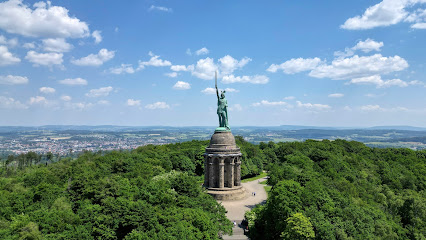
Adlerwarte Berlebeck
Explore the enchanting Adlerwarte Berlebeck, a bird sanctuary in Detmold, where nature meets education through breathtaking avian displays.
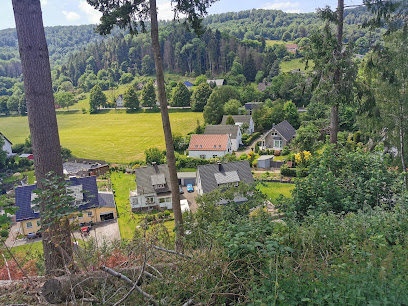
Falkenburg
Explore the enchanting Falkenburg, a historical landmark in Detmold, where rich heritage meets stunning hiking trails in a picturesque setting.
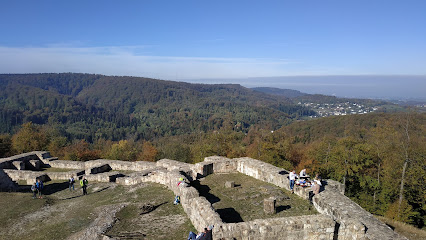
Hiddeser Bent
Discover the serene beauty of Hiddeser Bent, a picturesque park in Detmold perfect for nature walks and outdoor relaxation.
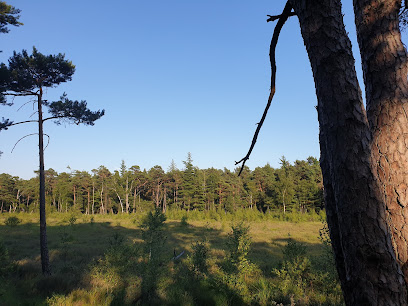
Dreiflussstein
Experience the tranquility and historical allure of Dreiflussstein, a unique tourist attraction where three rivers meet in the heart of Augustdorf.
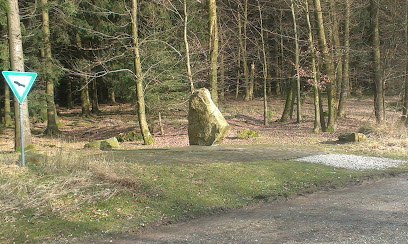
Teutoburg Forest / Egge Hills Nature Park
Explore the scenic trails, rich history, and serene beauty of Teutoburg Forest and Egge Hills Nature Park, a natural gem in Germany.
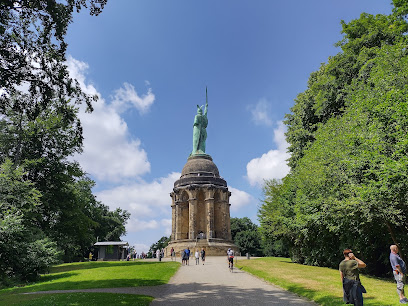
Unmissable attractions to see
Externsteine
Explore the enchanting Externsteine, a remarkable natural and historical landmark in Horn-Bad Meinberg, Germany, known for its stunning rock formations and rich cultural heritage.

Hermannsdenkmal
Discover the grandeur of Hermannsdenkmal, a monumental tribute to German history set amidst stunning natural landscapes in Detmold.
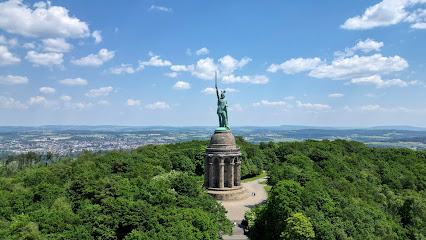
Safari Land Stukenbrock
Experience the ultimate family adventure at Safari Land Stukenbrock, where thrilling rides meet amazing wildlife in a beautiful park setting.
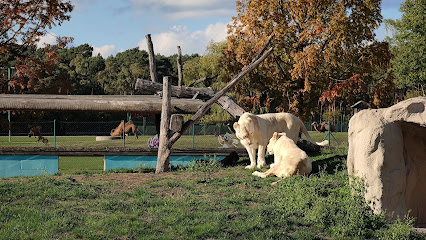
Detmold Open-air Museum
Discover the rich cultural heritage of rural Germany at the Detmold Open-air Museum, an immersive journey through time in a stunning outdoor setting.
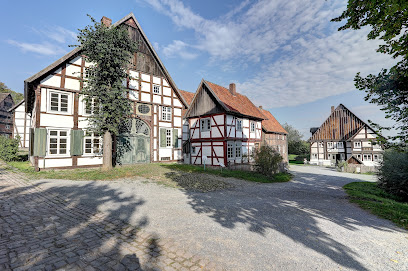
Bird Park Heiligenkirchen
Discover the wonder of avian life at Bird Park Heiligenkirchen, where nature and education come together for an unforgettable experience.
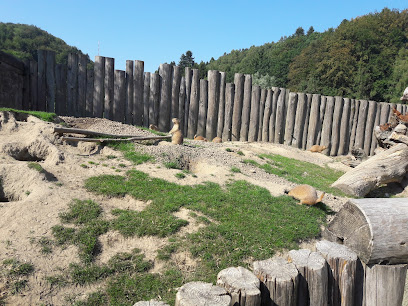
Adlerwarte Berlebeck
Discover the beauty of birds of prey at Adlerwarte Berlebeck, a captivating animal park in Detmold that blends adventure with education.
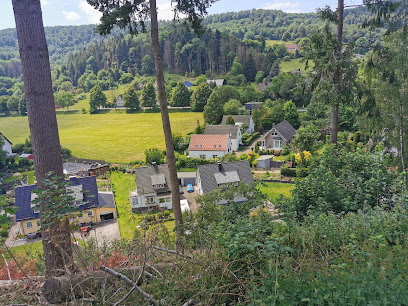
Battle of the Teutoburg Forest (Varus Battle) in the Osnabrücker Land Museum & Park Kalkriese
Explore the historic site of the Battle of the Teutoburg Forest at Kalkriese Museum & Park, where history and nature meet.
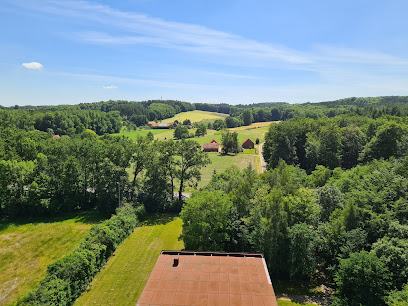
Eastern Teutoburg Forest
Explore the natural beauty and rich history of the Eastern Teutoburg Forest, a serene national forest perfect for outdoor adventures in Germany.
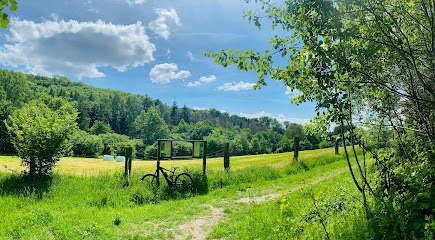
Princely Residence Castle Detmold
Explore the majestic Princely Residence Castle Detmold, a stunning historical landmark filled with rich heritage and breathtaking architecture.

Palaisgarten
Explore the tranquil beauty of Palaisgarten in Detmold, a state park that combines nature, history, and culture for an unforgettable experience.

Falkenburg
Discover the perfect blend of history and nature at Falkenburg, a stunning tourist attraction in Detmold, Germany.
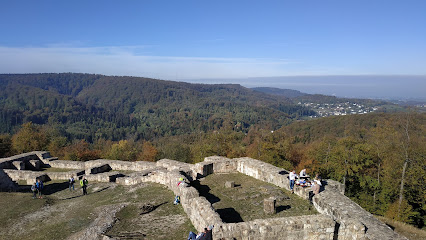
Paderborner Dorf
Explore the enchanting Paderborner Dorf, a historical open-air museum in Detmold showcasing Paderborn's rich cultural heritage and traditional village life.
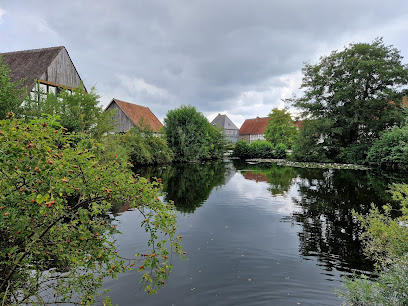
Lippe Regional Museum Detmold
Explore the captivating history and diverse culture of Detmold at the Lippe Regional Museum, an enriching experience for every traveler.
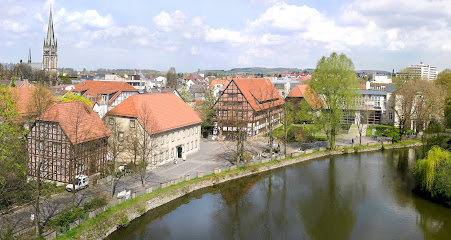
Dörenschlucht
Discover the breathtaking beauty of Dörenschlucht, a stunning gorge in Detmold, perfect for hiking and nature exploration.
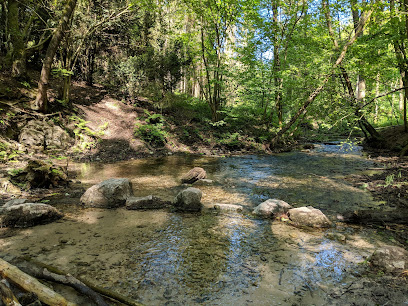
Hiddeser Bent
Experience the serene beauty of Hiddeser Bent, a stunning park in Detmold, perfect for nature lovers and outdoor enthusiasts seeking tranquility.
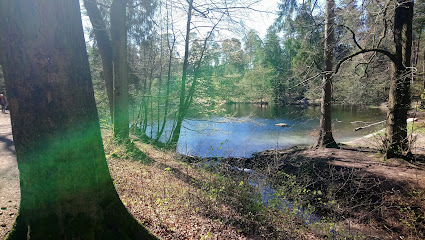
Essential places to dine
Schnitzel-Point
Discover the authentic taste of Germany at Schnitzel-Point in Detmold—home of mouthwatering schnitzels and gourmet burgers.

Liebharts Sudhaus Gasthausbrauerei Detmold
Discover authentic German cuisine and craft brews at Liebharts Sudhaus Gasthausbrauerei in Detmold - a true culinary gem!
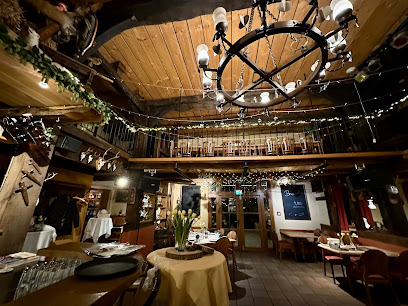
Waldhotel Silbermühle
Experience authentic German cuisine amidst serene landscapes at Waldhotel Silbermühle - a perfect retreat for food lovers.

Felsenwirt Externsteine
Experience authentic German cuisine amidst breathtaking landscapes at Felsenwirt Externsteine in Horn-Bad Meinberg.
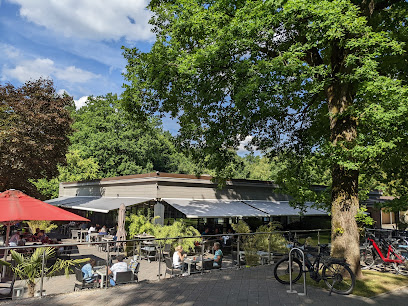
Restaurant Georgios
Discover exquisite cuisine at Restaurant Georgios in Detmold – where tradition meets modernity in every delightful dish.
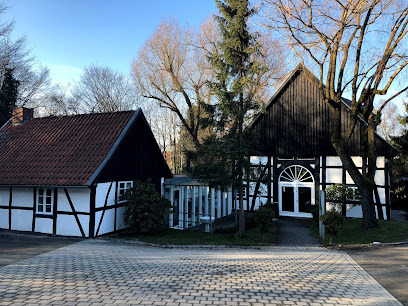
Restaurant Spartakus
Discover authentic Greek cuisine at Restaurant Spartakus in Augustdorf – where every meal is a culinary adventure into Mediterranean flavors.
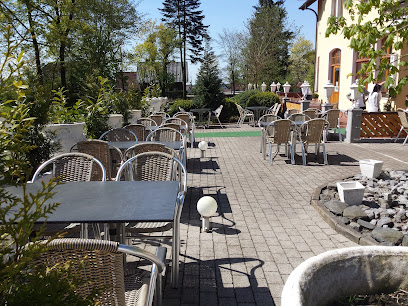
Die Windmühle Fissenknick
Savor traditional German cuisine amidst stunning landscapes at Die Windmühle Fissenknick in Horn-Bad Meinberg.

Gasthaus Schlobeit
Experience authentic German cuisine at Gasthaus Schlobeit in Horn-Bad Meinberg – where tradition meets flavor in a cozy setting.

Alter Krug Helpup
Experience authentic German cuisine at Alter Krug Helpup, where delicious meals meet a cozy atmosphere in Oerlinghausen.
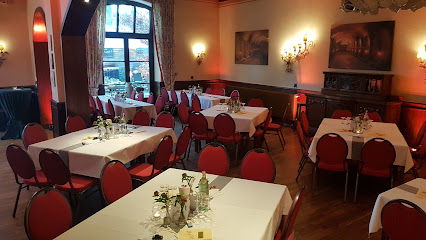
Gaststätte Zum Donoperteich
Experience authentic German cuisine at Gaststätte Zum Donoperteich in Detmold - A cozy inn blending tradition with delightful flavors.
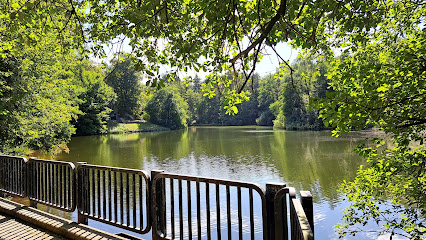
Krug zum grünen Kranze
Discover authentic German flavors at Krug zum grünen Kranze in Detmold – where tradition meets taste in every dish.
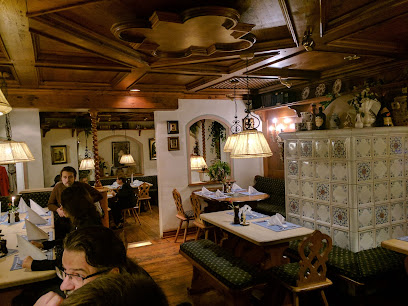
Fürstliches Forsthaus Kreuzkrug
Experience authentic German cuisine at Fürstliches Forsthaus Kreuzkrug - where tradition meets flavor in beautiful Schlangen.

Landhaus Hirschsprung, Hotel und Restaurant
Discover authentic German hospitality at Landhaus Hirschsprung - where comfort meets culinary excellence in Detmold.
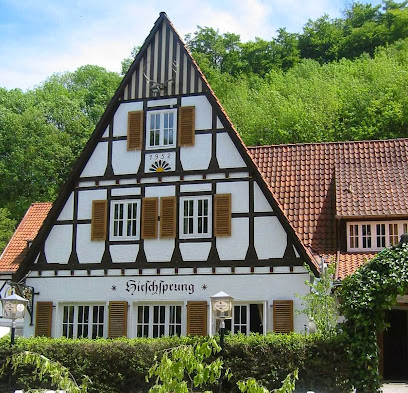
3er Krug -Pub & Kitchen- (Gaststätte Dreierkrug)
Discover Detmold's 3er Krug - Pub & Kitchen: A lively gastropub offering delicious food and vibrant entertainment in a welcoming atmosphere.
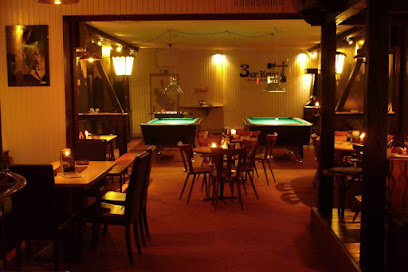
Landhaus Ellernkrug
Experience the best of German hospitality at Landhaus Ellernkrug – where comfort meets exquisite dining in Lage.
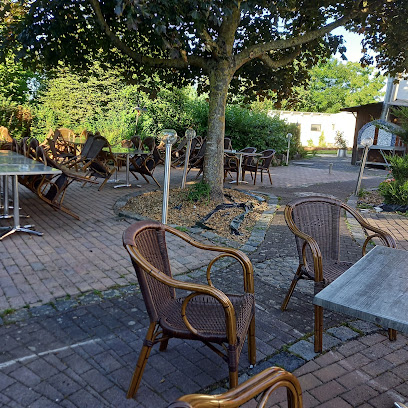
Markets, malls and hidden boutiques
Tamaris Fabrikverkauf
Explore exceptional footwear and fashion accessories at Tamaris Fabrikverkauf in Detmold, where style meets affordability.

VERVE KAFFEE Detmold
Discover the heart of Detmold's coffee culture at VERVE KAFFEE, where every cup tells a story of rich flavors and delightful experiences.
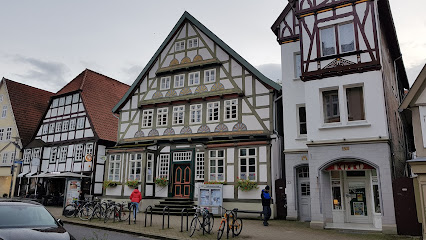
Mix Markt
Explore Mix Markt in Detmold: Your gateway to authentic local flavors and international treats in a vibrant supermarket setting.

Heidsiek Bäckerei - Konditorei - Café
Experience authentic German baked goods and delightful pastries at Heidsiek Bäckerei in Detmold, a must-visit for every traveler.
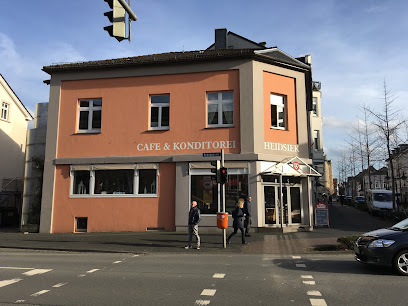
Café - confectionery M. Dahlhaus
Experience the sweet allure of Café M. Dahlhaus, a must-visit bakery in Detmold for delectable pastries and delightful breakfasts.

Orient Shop Detmold
Discover the unique world of tobacco and vaporizers at Orient Shop Detmold, where enthusiasts and newcomers find their perfect match.
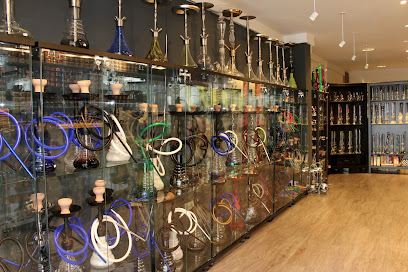
Disse, Inh. Andrea Meier-Wilkenloh e.K.
Explore Detmold's travel agency, gift shop, and local treasures at Disse, where every visit enriches your travel experience.

Ingrid's Teeladen
Discover the exquisite world of tea at Ingrid's Teeladen, a delightful tea store in Detmold, Germany, offering a rich selection and cozy atmosphere.
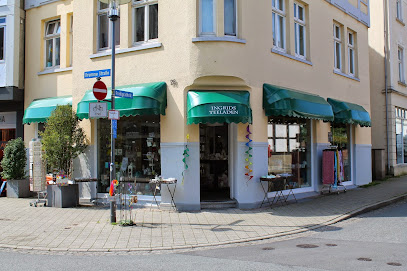
Rituals
Explore the tranquil essence of beauty and wellness at Rituals in Detmold, where self-care meets sophistication.
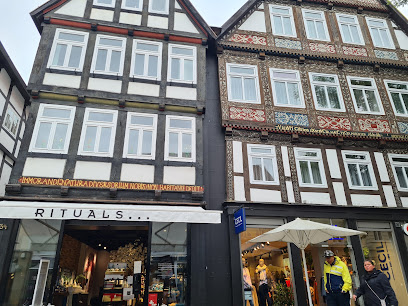
BUTLERS@home24 Detmold Bruchstraße
Explore BUTLERS@home24 in Detmold for an enchanting selection of home goods, furniture, and unique gifts that capture the essence of style and comfort.
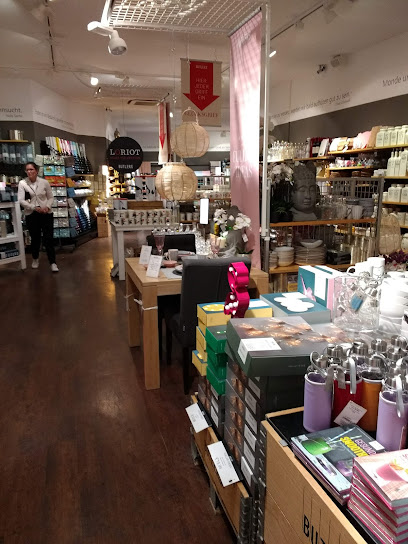
Ereader Store
Explore cutting-edge e-readers and accessories at Ereader Store in Detmold, where technology meets reading passion.

Wohnaccessoires Gartenmöbel Hauptsache SCHÖN
Explore Wohnaccessoires Gartenmöbel Hauptsache SCHÖN for unique gifts, stylish home accessories, and gourmet delights in Detmold.
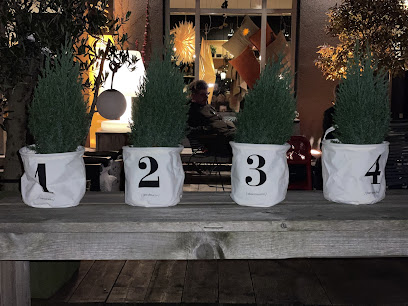
Ernsting's family
Explore stylish and affordable fashion for the whole family at Ernsting's Family in Detmold, a must-visit clothing store for tourists.
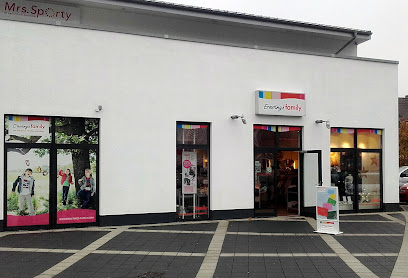
Asia Shop
Explore the vibrant flavors of Asia at Asia Shop, Detmold's premier grocery destination for authentic Asian ingredients and snacks.
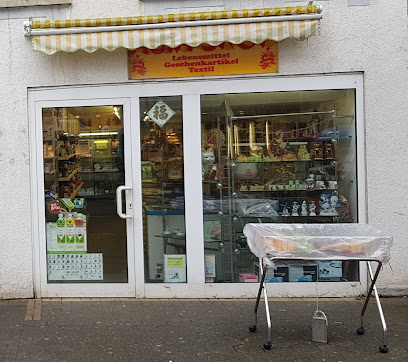
Dux individuelle Mode
Discover unique women's fashion at Dux Individuelle Mode in Detmold, where style meets individuality in a charming boutique setting.
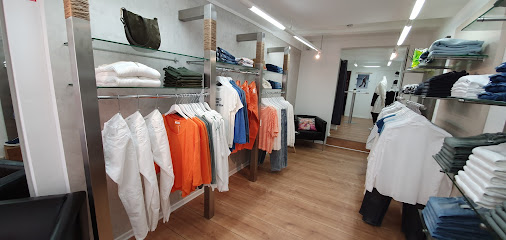
Essential bars & hidden hideouts
Cosmo:Lounge Detmold
Discover the heart of Detmold at Cosmo:Lounge, where European flavors and a cozy atmosphere await you.
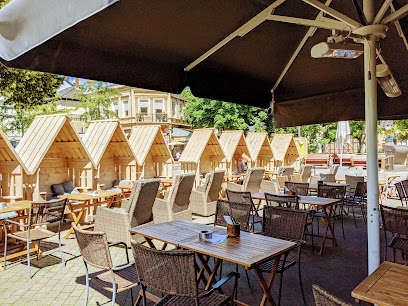
Bienenschmidt
Experience the charm of Bienenschmidt, where delightful meals and a cozy atmosphere await you in the heart of Lage.
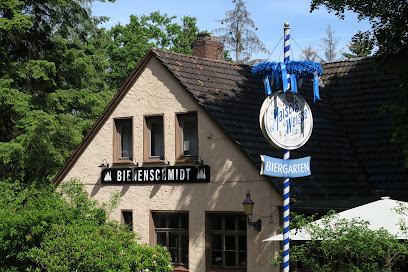
Paraplü Detmold
Discover Paraplü Detmold, a charming gastropub with a cozy atmosphere, delicious food, and a fantastic beer garden for a true local experience.
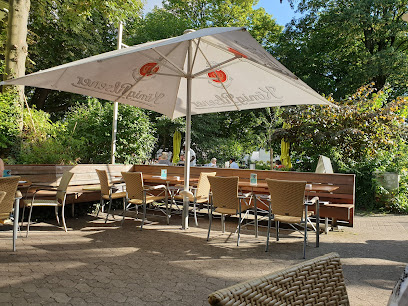
3er Krug -Pub & Kitchen- (Gaststätte Dreierkrug)
Discover the lively atmosphere of 3er Krug - Pub & Kitchen in Detmold, where authentic German cuisine meets a vibrant beer garden and live music.
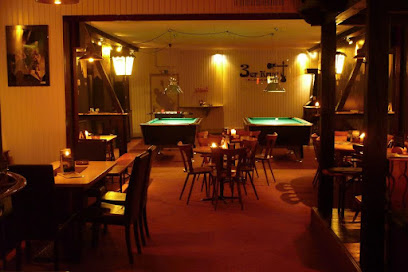
Kottmanns Cocktailbar
Experience the vibrant nightlife of Detmold at Kottmanns Cocktailbar, where expertly crafted cocktails and a chic atmosphere await.
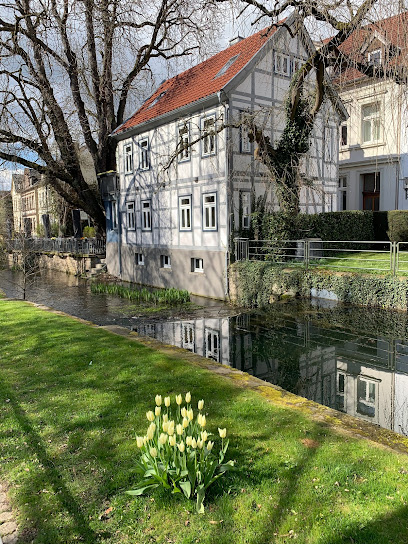
Kaiserkeller
Discover the vibrant Kaiserkeller in Detmold, where live music and delicious food create an unforgettable nightlife experience.

Café Mix
Discover Café Mix in Detmold, where delightful coffee meets a cozy atmosphere, perfect for relaxation and socializing.
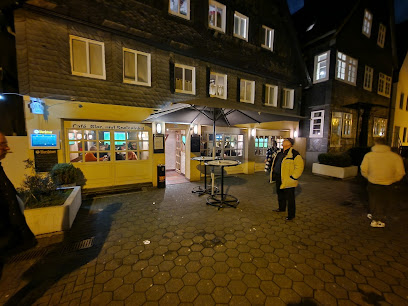
Knispel
Discover the heart of Detmold at Knispel, a cozy pub offering traditional German dishes and a warm, inviting atmosphere perfect for all travelers.
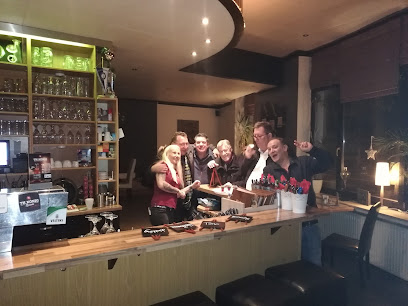
Sky Sportsbar Matchpoint
Experience the thrill of live sports at Sky Sportsbar Matchpoint, where fans unite in Horn-Bad Meinberg for excitement and affordable fun.
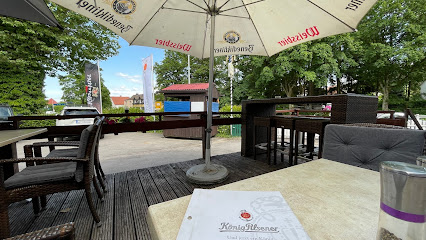
Roots meets Pizzabox
Discover the perfect blend of gastropub charm and delicious pizza at Roots Meets Pizzabox in Detmold.
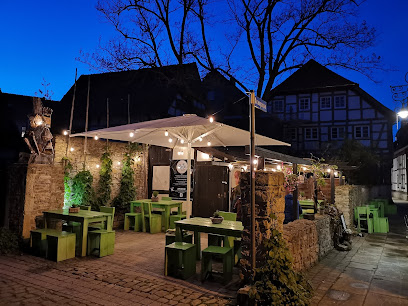
LUI DETMOLD
Experience the vibrant flavors of LUI Detmold, a top bistro and gastropub offering a unique dining experience in the heart of Detmold.
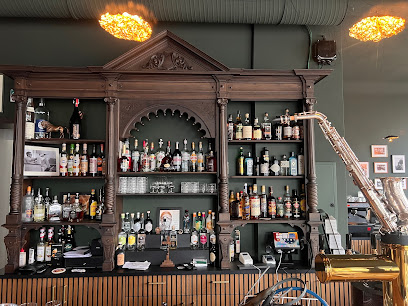
Liebharts Fachwerkdorf
Discover the heart of Detmold at Liebharts Fachwerkdorf, a delightful beer garden offering traditional German cuisine and a warm atmosphere.
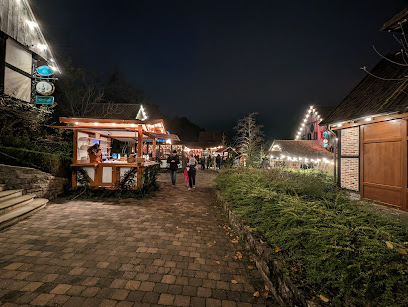
Turmschänke
Discover the charm of Horn-Bad Meinberg at Turmschänke, where local brews and hearty German fare create an unforgettable pub experience.
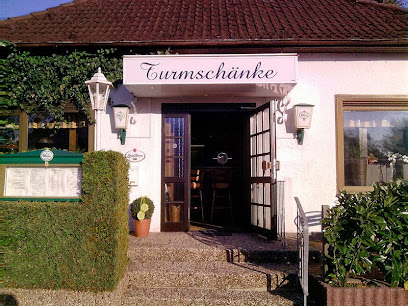
Bar Kneipe Lindenkrug
Experience the local charm and vibrant atmosphere of Bar Kneipe Lindenkrug, a must-visit pub in Bad Lippspringe for an unforgettable evening.
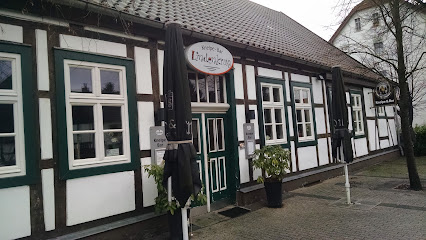
Eggestein Bar
Discover the charm of Eggestein Bar, your cozy spot in Horn-Bad Meinberg for cocktails, darts, and delightful company.
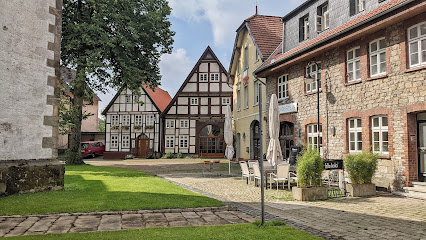
Local Phrases about Teutoburg Forest
-
- HelloHallo
[hah-loh] - GoodbyeAuf Wiedersehen
[owf vee-der-zay-en] - YesJa
[yah] - NoNein
[nine] - Please/You're welcomeBitte
[bih-tuh] - Thank youDanke
[dahn-kuh] - Excuse me/SorryEntschuldigung
[ent-shool-dee-goong] - How are you?Wie geht es dir?
[vee gayt es deer] - Fine. And you?Gut. Und dir?
[goot oont deer] - Do you speak English?Sprechen Sie Englisch?
[shpre-khen zee eng-leesh] - I don't understandIch verstehe nicht
[ihkh fair-shtay-uh nikht]
- HelloHallo
-
- I'd like to see the menu, pleaseIch möchte bitte die Speisekarte sehen
[ihkh merkh-tuh bih-tuh dee shpy-zuh-kahr-tuh zay-en] - I don't eat meatIch esse kein Fleisch
[ihkh es-suh kine flysh] - Cheers!Prost!
[prohst] - I would like to pay, pleaseIch möchte bitte zahlen
[ihkh merkh-tuh bih-tuh tsah-len]
- I'd like to see the menu, pleaseIch möchte bitte die Speisekarte sehen
-
- Help!Hilfe!
[hil-feh] - Go away!Geh weg!
[geh vehg] - Call the Police!Rufen Sie die Polizei!
[roo-fen zee dee poh-lee-tsai] - Call a doctor!Rufen Sie einen Arzt!
[roo-fen zee iyn-en ahrts] - I'm lostIch bin verloren
[ihkh bin fair-loh-ren] - I'm illIch bin krank
[ihkh bin krank]
- Help!Hilfe!
-
- I'd like to buy...Ich möchte kaufen...
[ihkh merkh-tuh kow-fen] - I'm just lookingIch schaue nur
[ihkh show-uh noor] - How much is it?Wie viel kostet es?
[vee feel kaws-tet es] - That's too expensiveDas ist zu teuer
[dahs ist tsoo toy-er] - Can you lower the price?Kannst du den Preis senken?
[kahnst doo den prys zeng-ken]
- I'd like to buy...Ich möchte kaufen...
-
- What time is it?Wie spät ist es?
[vee shpet ist es] - It's one o'clockEs ist ein Uhr
[es ist iyn oor] - Half past (10)Halb zehn
[halb tsayn] - MorningMorgen
[mohr-gen] - AfternoonNachmittag
[nahkh-mit-tahg] - EveningAbend
[ah-bent] - YesterdayGestern
[geh-stern] - TodayHeute
[hoi-teh] - TomorrowMorgen
[mohr-gen] - 1Eins
[iyns] - 2Zwei
[tsvai] - 3Drei
[dry] - 4Vier
[feer] - 5Fünf
[foonf] - 6Sechs
[zeks] - 7Sieben
[zee-ben] - 8Acht
[ahkt] - 9Neun
[noyn] - 10Zehn
[tsayn]
- What time is it?Wie spät ist es?
-
- Where's a/the...?Wo ist ein/der...?
[voh ist iyn/dehr] - What's the address?Was ist die Adresse?
[vahs ist dee ah-dreh-suh] - Can you show me (on the map)?Können Sie mir zeigen (auf der Karte)?
[kern-en zee meer tsay-gen (owf dehr kahr-teh)] - When's the next (bus)?Wann kommt der nächste (Bus)?
[vahn kohmt dehr nekh-stuh (boos)] - A ticket (to ....)Eine Fahrkarte (nach ....)
[iyn-uh fahr-kahr-tuh (nahkh)]
- Where's a/the...?Wo ist ein/der...?
History of Teutoburg Forest
-
The Battle of Teutoburg Forest stands as one of the most significant events in Roman and Germanic history. In 9 AD, an alliance of Germanic tribes led by Arminius ambushed and decisively destroyed three Roman legions under the command of Publius Quinctilius Varus. This battle halted Roman expansion into Germania and had long-lasting effects on the Roman Empire's northern frontier.
-
Arminius, also known as Hermann, was a chief of the Cherusci tribe and a former Roman auxiliary officer. Using his knowledge of Roman tactics, he orchestrated the ambush in the Teutoburg Forest, becoming a symbol of Germanic resistance. His legacy is celebrated throughout Germany, with numerous monuments and cultural references commemorating his leadership.
-
Located near Osnabrück, the Varusschlacht Museum and Park Kalkriese is a key site for understanding the Battle of Teutoburg Forest. The museum features archaeological finds, interactive exhibits, and detailed reconstructions that bring the ancient battle to life. The surrounding park allows visitors to walk the grounds where the conflict occurred, providing a tangible connection to history.
-
The Hermannsdenkmal, or Hermann Monument, is a towering statue located in the Teutoburg Forest near Detmold. Erected in the 19th century, this monument honors Arminius and commemorates his victory over the Romans. Standing at over 53 meters tall, it offers panoramic views of the surrounding forest and serves as a powerful symbol of German unity and pride.
-
Prior to the Battle of Teutoburg Forest, the Romans had undertaken several campaigns to subjugate the Germanic tribes and expand their empire. These efforts included the establishment of military bases, roads, and settlements aimed at integrating the region into the Roman Empire. The defeat in Teutoburg Forest marked the end of these expansionist ambitions.
-
The Teutoburg Forest was home to various Germanic tribes, including the Cherusci, Bructeri, and Marsi. These tribes had complex social structures, warrior cultures, and engaged in both conflict and trade with their neighbors, including the Romans. Their resistance to Roman rule played a crucial role in shaping the historical landscape of the region.
-
Today, the Teutoburg Forest is not only a historical site but also a place of cultural importance. It hosts numerous festivals, reenactments, and educational programs that celebrate its rich history. The forest itself, with its dense woods and serene landscapes, continues to inspire visitors and locals alike, serving as a natural and historical treasure.
Teutoburg Forest Essentials
-
Teutoburg Forest is located in North Rhine-Westphalia and Lower Saxony in Germany. The nearest major airports are Paderborn/Lippstadt Airport (PAD) and Hannover Airport (HAJ). From these airports, you can take a train or rent a car to reach the forest. The journey by car from Paderborn/Lippstadt takes about an hour, while from Hannover, it takes roughly two hours. Alternatively, trains operated by Deutsche Bahn connect to nearby cities such as Bielefeld, Detmold, and Paderborn, from where local transportation can be used to reach the forest.
-
Within Teutoburg Forest, the best way to explore is by renting a car, especially if you wish to visit multiple sites. However, public transportation is also available. Regional trains and buses connect key towns and cities in the area. Biking is another popular option, with numerous well-maintained trails available for cyclists. For shorter distances, hiking is highly recommended to fully appreciate the natural beauty of the forest.
-
The official currency in Germany is the Euro (EUR). Credit and debit cards are widely accepted, but it is advisable to carry some cash for smaller establishments, local markets, and rural areas. ATMs are readily available in nearby towns and cities, so you can withdraw cash as needed.
-
Teutoburg Forest is generally a safe destination for tourists. However, standard precautions should be taken, such as keeping an eye on personal belongings and avoiding isolated areas after dark. There are no specific high-crime areas targeting tourists, but it is always good practice to stay vigilant and aware of your surroundings.
-
In case of emergency, dial 112 for immediate assistance. This number connects you to fire, medical, and police services. It is recommended to have travel insurance that covers medical emergencies. For minor health issues, there are pharmacies in nearby towns where you can purchase over-the-counter medications.
-
Fashion: Do wear comfortable and weather-appropriate clothing, especially for hiking. Avoid overly flashy attire. Religion: Do respect local customs and traditions, especially when visiting religious sites. Public Transport: Do be respectful and offer your seat to elderly passengers. Don't eat or drink on public transport. Greetings: Do greet people with a handshake. A warm smile and eye contact are appreciated. Eating & Drinking: Do try local German delicacies and accept food offerings graciously. Don't refuse hospitality, as it is considered impolite.
-
To experience Teutoburg Forest like a local, take the time to visit smaller villages and engage with the residents. Attend local festivals and markets to get a sense of the regional culture. Don't miss the Externsteine rock formations and the Hermann Monument, both landmark sites in the forest. For a unique experience, explore the forest's extensive network of hiking and biking trails, which offer breathtaking views and a chance to connect with nature.
Nearby Cities to Teutoburg Forest
-
Things To Do in Munster
-
Things To Do in Bremen
-
Things To Do in Essen
-
Things To Do in Dusseldorf
-
Things To Do in Cologne
-
Things To Do in Bonn
-
Things To Do in Erfurt
-
Things To Do in Koblenz
-
Things To Do in Zwolle
-
Things To Do in Frankfurt
-
Things To Do in Hamburg
-
Things To Do in Arnhem
-
Things To Do in Nijmegen
-
Things To Do in Groningen
-
Things To Do in Aachen









